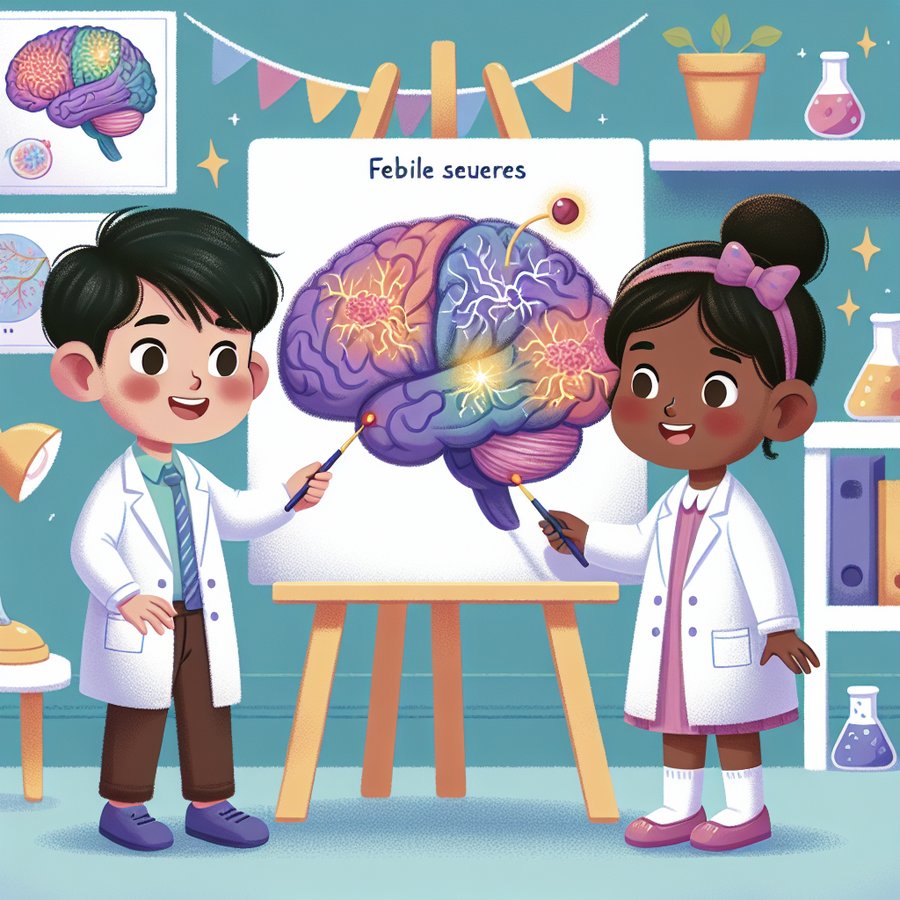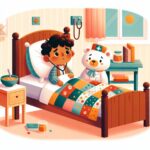Febrile seizures are frightening events for parents and caregivers of young children. Characterized by convulsions triggered by a fever, these seizures typically occur in babies and young children between the ages of 6 months and 5 years. Understanding febrile seizures, their symptoms, causes, and how to respond can provide peace of mind and ensure quick and effective care for your child. This article dives deep into the subject of febrile seizures, aiming to equip new parents with the knowledge they need.
What Are Febrile Seizures?
Febrile seizures are convulsions in a child triggered by a fever, often resulting from an infection. These seizures are generally short-lived, lasting for a few minutes, and while they are alarming, they typically don’t cause long-term damage. There are two types: simple febrile seizures, which are more common and involve the whole body; and complex febrile seizures, which are longer in duration and may involve only a part of the body.
To understand these seizures better, it’s important to recognize the signs and symptoms, which can include stiffness in the limbs, jerking movements, loss of consciousness, and rolling back of the eyes. Importantly, febrile seizures are not considered epilepsy, and most children outgrow them by the age of 5 or 6.
What Causes Febrile Seizures?
The exact cause of febrile seizures is not fully understood, but they are closely linked to fevers, usually 38°C (100.4°F) or higher. These fevers are often caused by viral infections such as the flu or roseola, although other infections can also trigger a seizure. Genetic factors may play a role, as children with a family history of febrile seizures are more likely to experience them.
It’s important for parents to understand that while febrile seizures can be triggered by a rapid increase in body temperature, not all fevers will lead to a seizure. Monitoring and managing your child’s fever can help reduce the risk of a febrile seizure.
How to Respond to Febrile Seizures
If your child experiences a febrile seizure, it’s crucial to remain calm and ensure their safety. Move them to a safe area, lay them on their side to keep their airway clear, and monitor the time. Do not attempt to restrain your child or put anything in their mouth. After the seizure has stopped, seek medical attention to determine and treat the underlying cause of the fever.
While most febrile seizures stop on their own within a few minutes, a seizure lasting longer than 5 minutes is considered an emergency and requires immediate medical intervention. Familiarizing yourself with the steps to take during and after a seizure can make a significant difference in how effectively you respond to this scary situation.
Preventing Febrile Seizures
Preventing febrile seizures mainly involves managing your child’s fever and monitoring for signs of illness. Giving your child medication such as acetaminophen or ibuprofen can help lower their fever. It’s also important to keep your child hydrated and dressed in light clothing to help reduce body temperature. However, it’s crucial to consult with a healthcare provider before giving any medication, especially for the first time.
While it’s not always possible to prevent febrile seizures, being proactive about your child’s health and knowing what to do if a seizure occurs can help manage the situation more effectively. Regular check-ups and vaccinations can also play a crucial role in preventing infections that may lead to fevers and, subsequently, febrile seizures.
For more in-depth information on related topics, consider reading about flu, roseola, and fever management on our site. Understanding these conditions can provide additional insights into preventing and managing febrile seizures.
When to Seek Medical Attention
Seeking medical attention after your child experiences a febrile seizure is always recommended, even if the seizure was brief and your child seems to have recovered. A healthcare provider can assess your child’s overall health, identify the cause of the fever, and provide guidance on further management. In some cases, additional tests may be required to rule out more serious conditions.
It’s particularly important to seek medical attention if your child’s seizure lasts longer than 5 minutes, if they experience repeated seizures, or if they show signs of a serious infection or illness. Early intervention can prevent complications and ensure that your child receives the appropriate care.
For more information on febrile seizures, visit the Centers for Disease Control and Prevention (CDC) website. This external link offers a comprehensive overview and additional resources for parents and caregivers navigating through febrile seizures.
Remember, febrile seizures are a common childhood occurrence and, while they can be alarming, they are usually not indicative of a serious problem. With the right knowledge and preparation, you can ensure the well-being of your child during and after these episodes.













